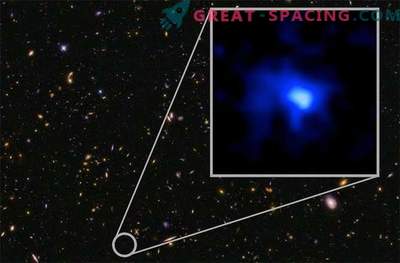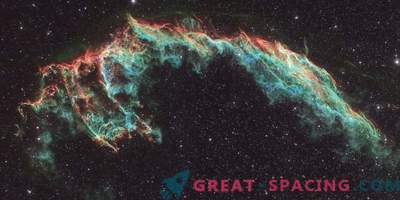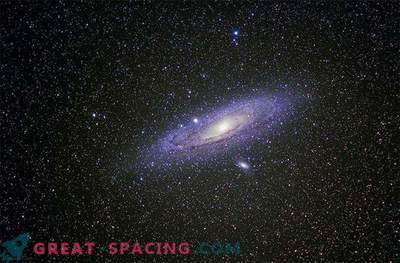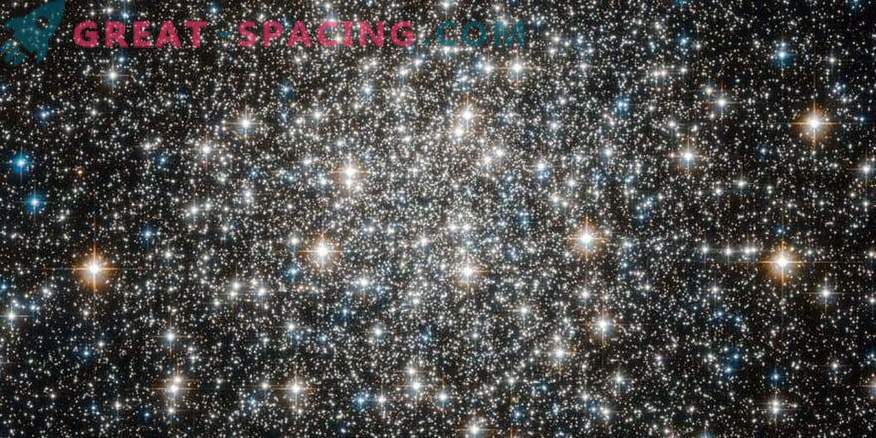
We know that the closest star to the Earth is the Sun. If we talk about objects outside the solar system, then in the first place in proximity among the stars is Proxima Centauri and the Alpha Centauri system. But how do we know this?
The first people were not particularly interested in the stars, as they considered outer space as a static dome, where celestial bodies are firmly attached above the Earth. But then the ancient wise men guessed that the world is much more complicated than it seemed initially.
For example, the astronomer from ancient Greece Aristarchus of Samos in the III century BC. er I tried to determine the distance of the sun. He considered that the star should be located 20 times farther from the moon (the current figure is 20 times more). More modern figures were provided by the astronomer Jacques Dominique Cassini in 1672, using the moment of the confrontation of Mars (140 million km).
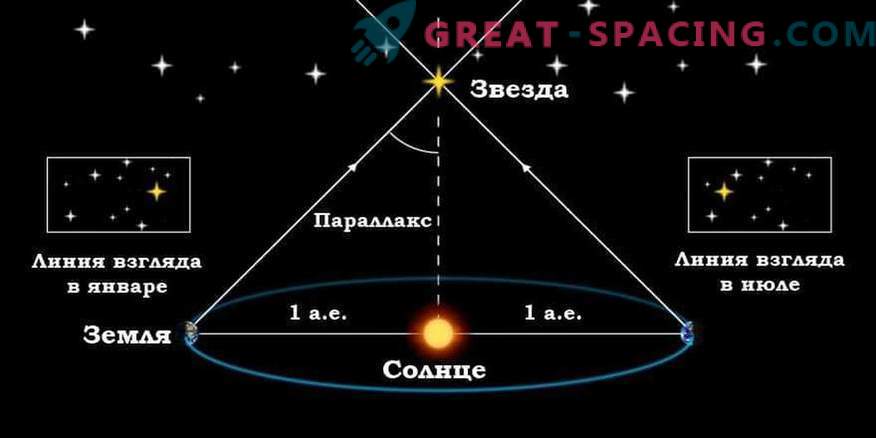
Visualization of the parallax method
For a long time, scientists had to use the movement of Venus to understand the parameters of the solar system. Thus arose major international projects, where scientists from around the world combined observations and derived distances to space objects. But how do researchers measure these distances?
The simplest and first method was parallax (triangulation). You may not know about it, but you constantly observe the effect in ordinary life. Remember how you went in the car, train or minibus. You may have noticed how fast the close objects (like posts and people) flash against the background of more distant objects (mountains, clouds, etc.). The conclusion is simple: the parallax offset for close objects is much more significant and remarkable.

Parallax effect
Parallax is calculated as an equation. You will need a base (measurement of two angles and one distance) and knowledge of trigonometry to calculate the length of one of the legs in a right triangle. The longer the base, the more significant the parallactic displacements and angles will become.
When moving from one end of the base to the other, the visible direction changes to a point. The shift of an object against the background of distant celestial bodies is called a parallax shift. What will the earth observer take as a base? This is the diameter of the earth's orbit around the sun.
The hardest thing was to apply parallax to more distant stars. The breakthrough happened only in the XIX century, when the goniometric devices became quite accurate. Luck smiled at Vasily Struve, who in 1837 first published the value of the parallax of the Vega star - 0.12 angular seconds. Further observations from Friedrich Bessel followed for the 61 Cygnus star - 0.3 ''.
Distances in the parallax method for other stars began to be measured in parsecs (1 parsecs = 3.26 light years). This is the starting point of reference, where exactly from this distance the radius of the orbit of our planet is viewed at an angle of 1 second. If you want to calculate the distance to the star in the parsecs, then use a simple formula in which 1 is divided by the star parallax in seconds.
The method works fine if you measure distances no further than 100 parsecs (the parallax method collides with a barrier in the form of the earth's atmosphere). But the universe is infinite. How to see more distant objects? Photometric methods that emerged with the development of photography and variable stars (cepheids) help out here. The first to succeed was astronomer Henriette Levitt. She studied the star shine on photometric plates using Cepheids on the territory of the Small Magellanic Cloud. She managed to understand that with the brightness of the star increases and the period of oscillation of the brightness.

Thanks to the brightness and visibility of Cepheids, objects near them can be traced. If we recall the connection between periodicity and brightness, then in the form of Cepheids we obtain a useful tool for calculating the scales of the Universe.
But it is difficult to measure the distance to the nearest Cepheid, since it is remote for 130 parsecs. Therefore, a “staircase distance” scheme emerged, where dispersed star clusters became an intermediate stage, where stellar objects are characterized by a total formation time. Drawing up a graph with an indicator of temperature and brightness led to the derivation of the main sequence line. All stars in the cluster are distant from Earth by almost a single distance, so their apparent brilliance made it possible to calculate the measure of luminosity.
It was necessary to determine the exact distance to at least one cluster in order to make a “fit of the main sequence”. This helped the Pleiades and Hyades. After that, we already had a staircase to the nearest Cepheids.

The Pleiades is an open cluster that can hold 3000 stars and is 400 light-years distant (120 parsecs). Among the names are: Seven Sisters, NGC 1432/35 and M45.
The accuracy of the measurement increases if you observe the stars not from the Earth, but at least in orbit. Therefore, in 1989, the Hipparcos satellite was launched, with the help of which they were able to present an astronomical catalog of 120 stars with annual parallaxes.
If you want to go even further, you cannot do without a redshift. The emergence of the method is due to the astronomer Vesto Slifer, who, in the study of galactic spectra, noticed that many lines are red-shifted in relation to the observer. Then Edwin Hubble took over the development of the theme, who derived the Hubble constant and realized that the galaxies are being removed (the removal rate is proportional to the distance to the galaxy), and the Universe is expanding. In the modern world, it is the redshift method that makes it possible to determine distances to distant galaxies. Of course, let's not forget that now scientists have more advanced observation technologies and satellites in orbit, so the distances to the stars are being refined all the time. For example, the last Gaia mission is to accurately measure the parallax, intrinsic and radial velocity for 1 billion stars.





